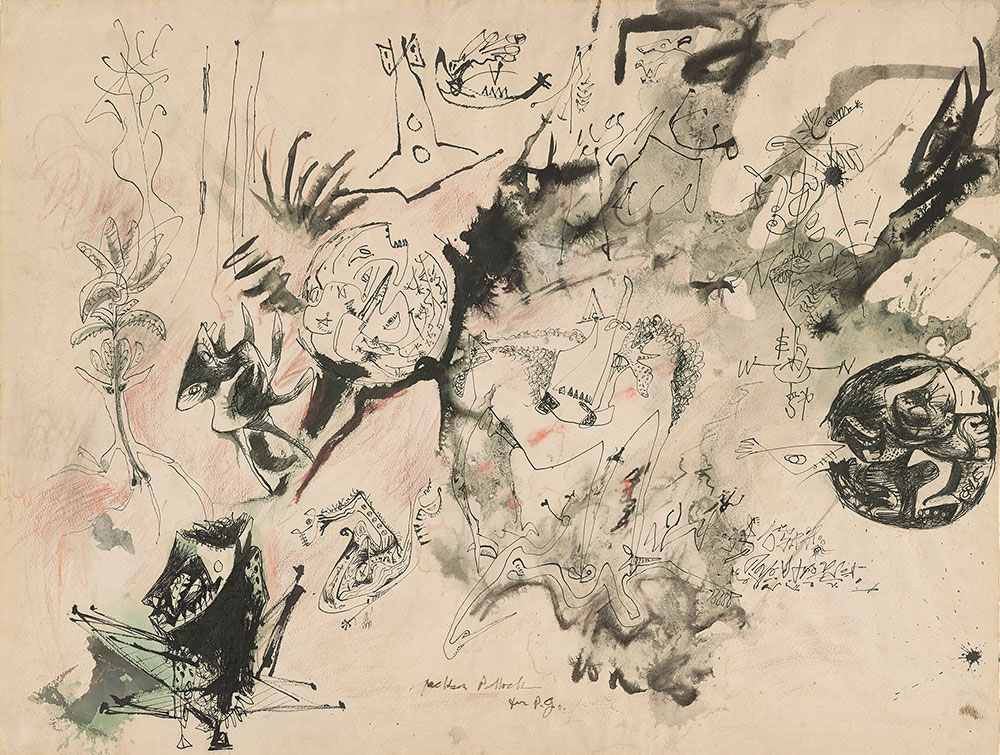
An important example of the fusion of primitivism and modernism that characterized Pollock’s art in the first half of the 1940s, this drawing reveals the wide range of his sources, from the masklike figures, mythic animals, and pictographs of primitive art to the imagery and style of Joan Miró, Paul Klee, and Picasso. This sheet is dedicated to Peggy Guggenheim, who played a vital role in fostering Pollock’s career. It was included in his first solo exhibition at her New York gallery, Art of This Century, in November 1943.
Jackson Pollock
American; 1912–1956
Untitled [Drawing for P. G.], ca. 1943
Pen and black ink and wash, green ink wash, red colored pencil, and orange watercolor pencil
2006.59
The author of this drawing is Jackson Pollock, who is better known for his drip paintings of the late 1940s, made by dripping and pouring paint onto the canvas to create complex linear abstractions. This drawing was made earlier in his career, during an experimental phase when Pollock was looking for inspiration in a variety of sources. On the one hand, he admired European modernism. Notice the small linear drawings of snakes and birds that recall similar creatures in the whimsical compositions of Paul Klee or Juan Miró, or the image of a bull at the center of the sheet, which may refer to Picasso's bullfights and Minotaurs.
On the other hand, Pollock was fascinated by the art of tribal and primordial societies. He included here references to Native American artifacts and African sculptures. Notice the mask at lower left, for instance. At lower right, the imaginary scripts resemble primitive pictographs. The disparate elements of the composition are unified by the technique, notably, the black ink wash and the accents of red chalk. The loose application of the wash and the spattered ink, which anticipates the drip paintings, recall the automatic techniques of the surrealists, who attempted to draw without conscious control as a means to release the artist's subconscious. The dedication to PG next to the signature refers to Peggy Guggenheim, the well-known collector and dealer, who gave Pollock his first solo exhibition at her gallery in New York in 1943. She provided major support to the young artist by giving him a monthly stipend for several years. She also organized several exhibitions of his work, which were essential in establishing his reputation.
